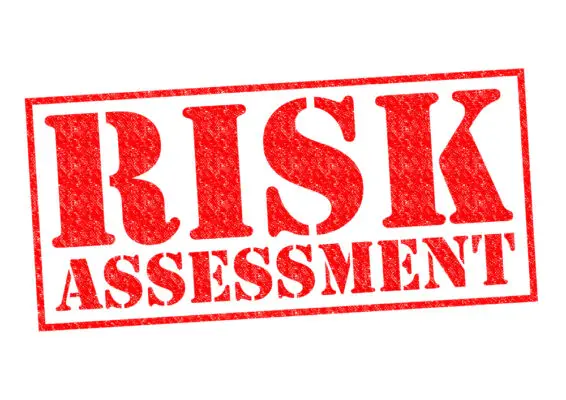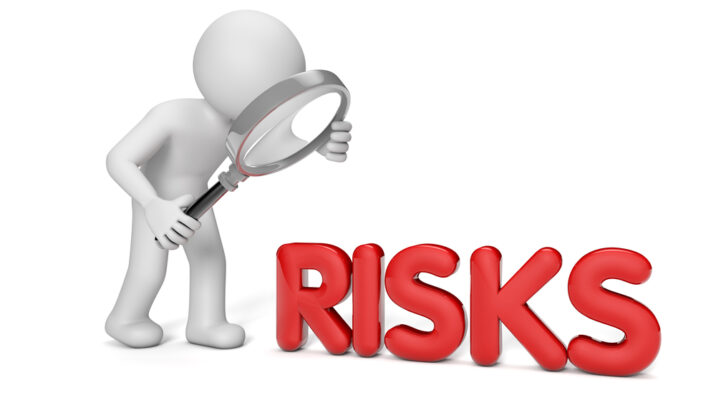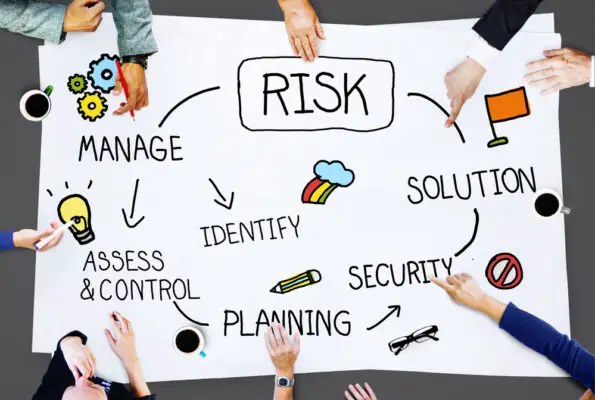A risk factor is an element of uncertainty that could have a negative impact on the success of a project or venture. Risk factors can range from financial uncertainties to legal issues and beyond. It’s important to understand how risk factors can affect your business, so you can manage them effectively. Let’s dive into what a risk factor is and how to use it to your advantage.
Risk factors can also mean characteristics or conditions that increase the chance of developing a certain disease or health problem. Risk factors can be divided into two categories: modifiable and non-modifiable.
Modifiable risk factors are those that can be changed, such as lifestyle choices like smoking, poor diet, and lack of exercise. Non-modifiable risk factors are those that cannot be changed, such as age, gender, genetics, and family history.
Examples of common risk factors include age, gender, family history, lifestyle choices (smoking, alcohol consumption), environmental exposure (pollution), physical inactivity, obesity, high cholesterol levels, and certain medical conditions (diabetes). Other less common risk factors may include sleep deprivation and certain medications.
It is important to understand which risk factors you may have so you can take steps to reduce your risk of developing a particular disease or health problem. For example, if you have a family history of heart disease or stroke, then it is important to make lifestyle changes such as quitting smoking and exercising regularly to reduce your risk for these conditions.
What Is A Risk Factor?
A risk factor is any element that could increase the potential for harm or loss. This could mean financial losses, legal risks, environmental hazards, market risks, or any other type of uncertainty that could negatively affect your business in some way.
Both internal and external elements, such as changes in the economy, natural disasters like floods or earthquakes, new legislation or regulations, personnel changes within your organization, and technology advancements, can cause risk factors.
It’s important to identify these risk factors early on so you can take steps to mitigate them and protect your business from harm or loss.
Risk factors
The risk factor is a condition that increases the chance that a person may attempt to commit suicide.
Suicide is a serious issue that affects many people in the world. It is important to understand the risk factors associated with suicide to better protect ourselves and our loved ones.
The primary risk factor for suicide is depression, which can be caused by various factors such as stress, trauma, or a mental health disorder. Other risk factors include substance abuse, chronic pain, family history of suicide, and access to lethal means. People who have previously attempted suicide are also at higher risk for future attempts.
It’s important to recognize the warning signs of someone who may be at risk for suicide. These signs can include talking about wanting to die or kill oneself, expressing feelings of hopelessness or worthlessness, withdrawing from activities or social interactions, and changes in mood or behaviour.
Age has been identified as a risk factor. Recent online study The researchers analysed electronic medical records from 56,340 patients with significant risk factors to respond to coronavirus infections.
The genetics of men is only one factor that may be linked to breast cancer. The board has faced an issue each year in regard to the uncertainty of state funding from the Legislature. The following examples sentences were chosen automatically from several online sources to reflect the current usage of the term risk factor.
Examples of Risk factor s
Market Risk Factors
Market risk factors refer to any changes in the value of a security or asset due to changing economic conditions. This includes anything from a major recession to an unexpected geopolitical event like Brexit. Market risk factors can lead to significant losses for investors, so it’s important to know how current events may impact the markets before making any financial decisions.
Credit Risk Factors
Credit risk factors refer to any changes in the creditworthiness of an individual or business. This includes changes in credit rating, defaulting on loans, or inability to pay back debts on time.
Credit risk factors are especially important for businesses as they can significantly reduce their ability to secure financing for future projects. It’s important for businesses to stay on top of their credit ratings and adjust their investments accordingly if there are any signs of a drop in creditworthiness.

Operational Risk Factors
Operational risk factors refer to any changes in operations that could have a negative impact on an organization’s bottom line. This includes things like natural disasters, data breaches, technological failures, or fluctuations in employee morale that could all potentially lead to losses for a company or individual investor. Knowing these risks can help you prepare for them and limit their effect as much as possible.
Managing Risk Factors
The key to managing risk factors effectively is having an action plan in place before they occur. You need to assess each risk factor’s potential impacts and develop strategies for handling them should they arise. This includes identifying who should be responsible for taking action if a certain risk factor occurs and creating contingency plans in case the worst-case scenario comes true.
Additionally, it’s essential to regularly review your existing processes and procedures to ensure that they are up-to-date with current best practices. The more prepared you are for potential risks, the more likely you’ll be able to minimize their impacts on your business operations.

Conclusion
Risk factors are a reality for any business, but understanding what they are and how they can affect your organization can help you manage them more effectively. By assessing potential risks ahead of time and coming up with strategies for handling them should they arise, you can limit the potential damage caused by them when they do occur.
Regular reviews of existing processes will help ensure that all your systems are up-to-date with current best practices, which will help reduce their vulnerability if an unforeseen issue arises.

Chris Ekai is a Risk Management expert with over 10 years of experience in the field. He has a Master’s(MSc) degree in Risk Management from University of Portsmouth and is a CPA and Finance professional. He currently works as a Content Manager at Risk Publishing, writing about Enterprise Risk Management, Business Continuity Management and Project Management.


